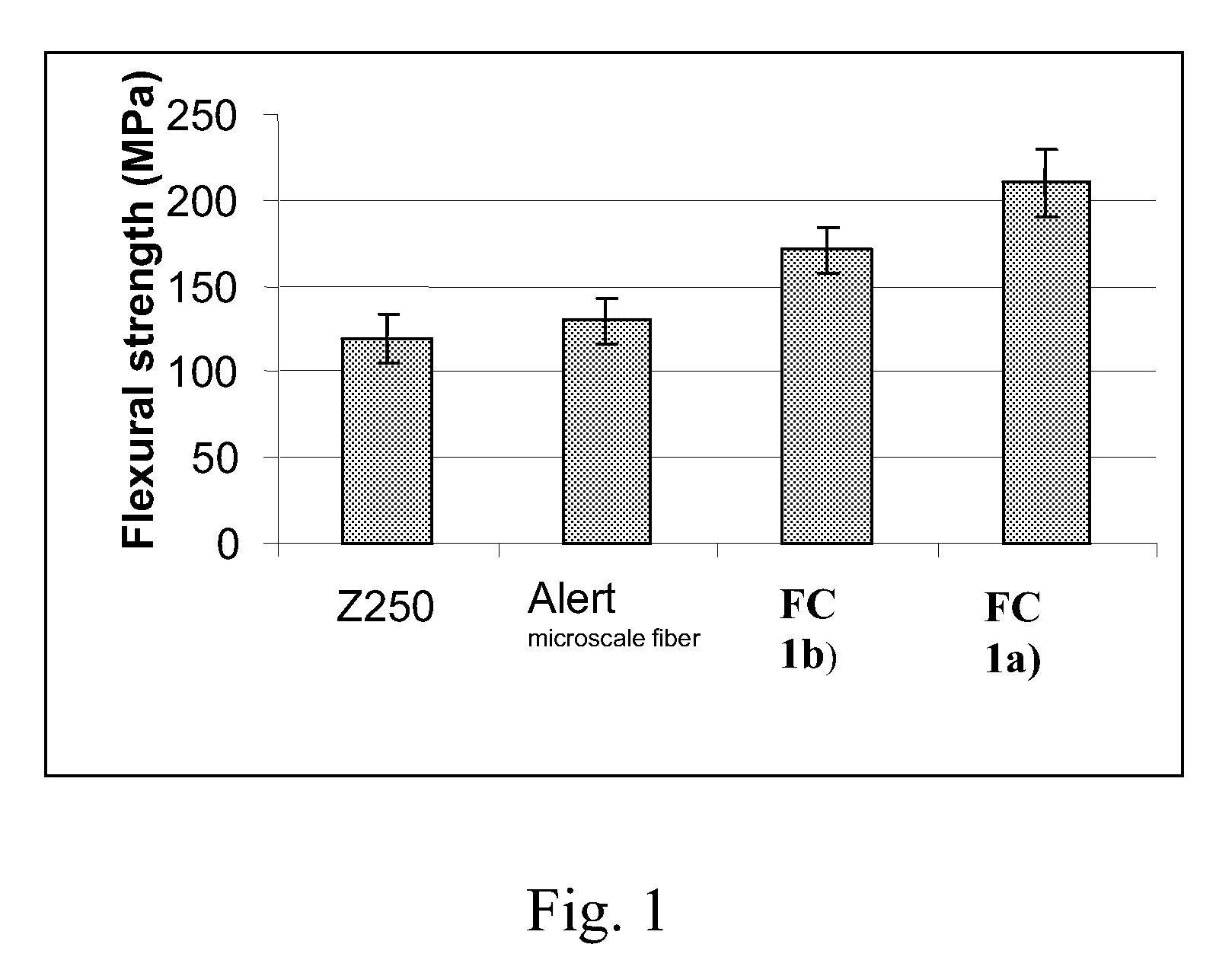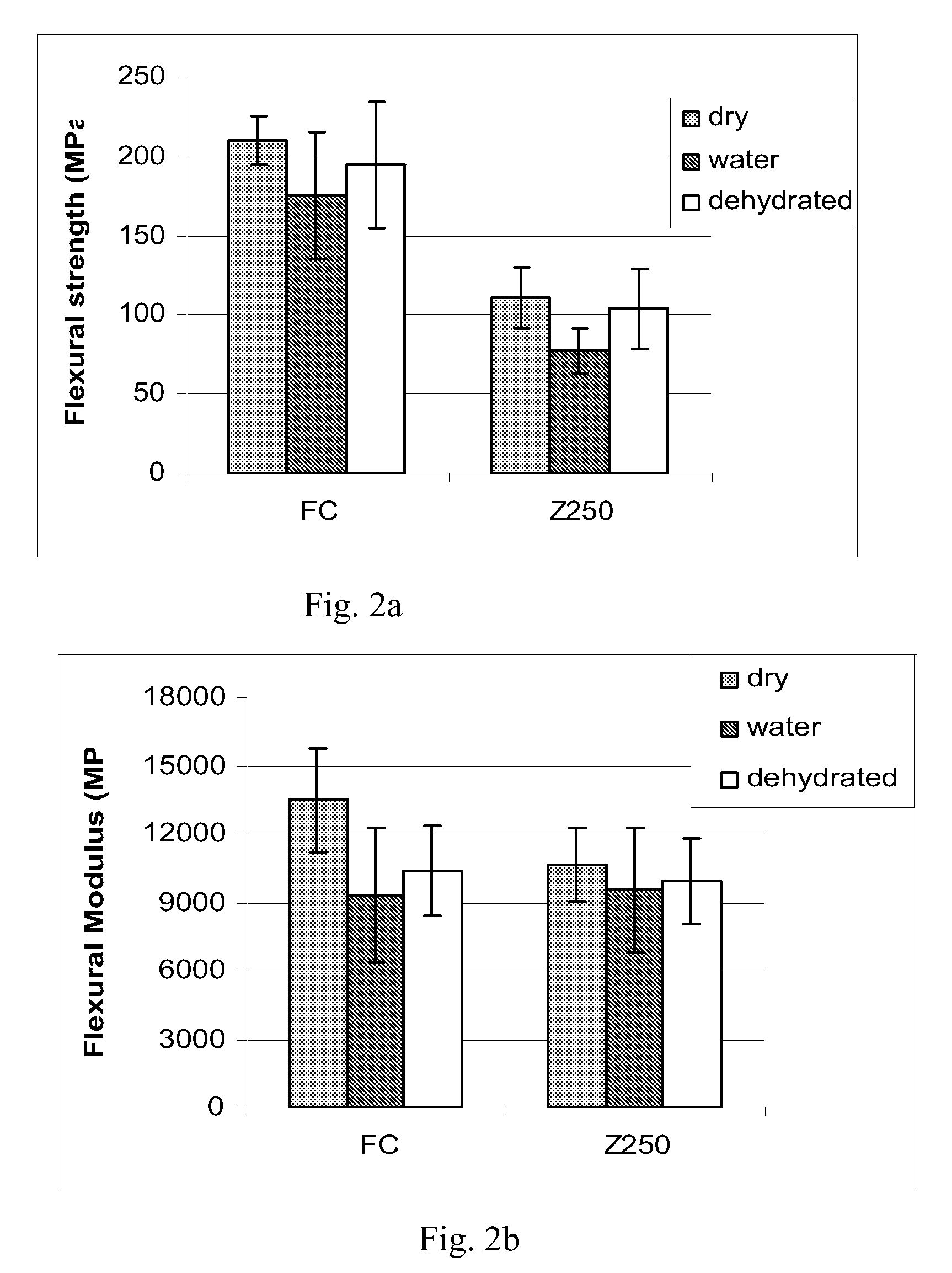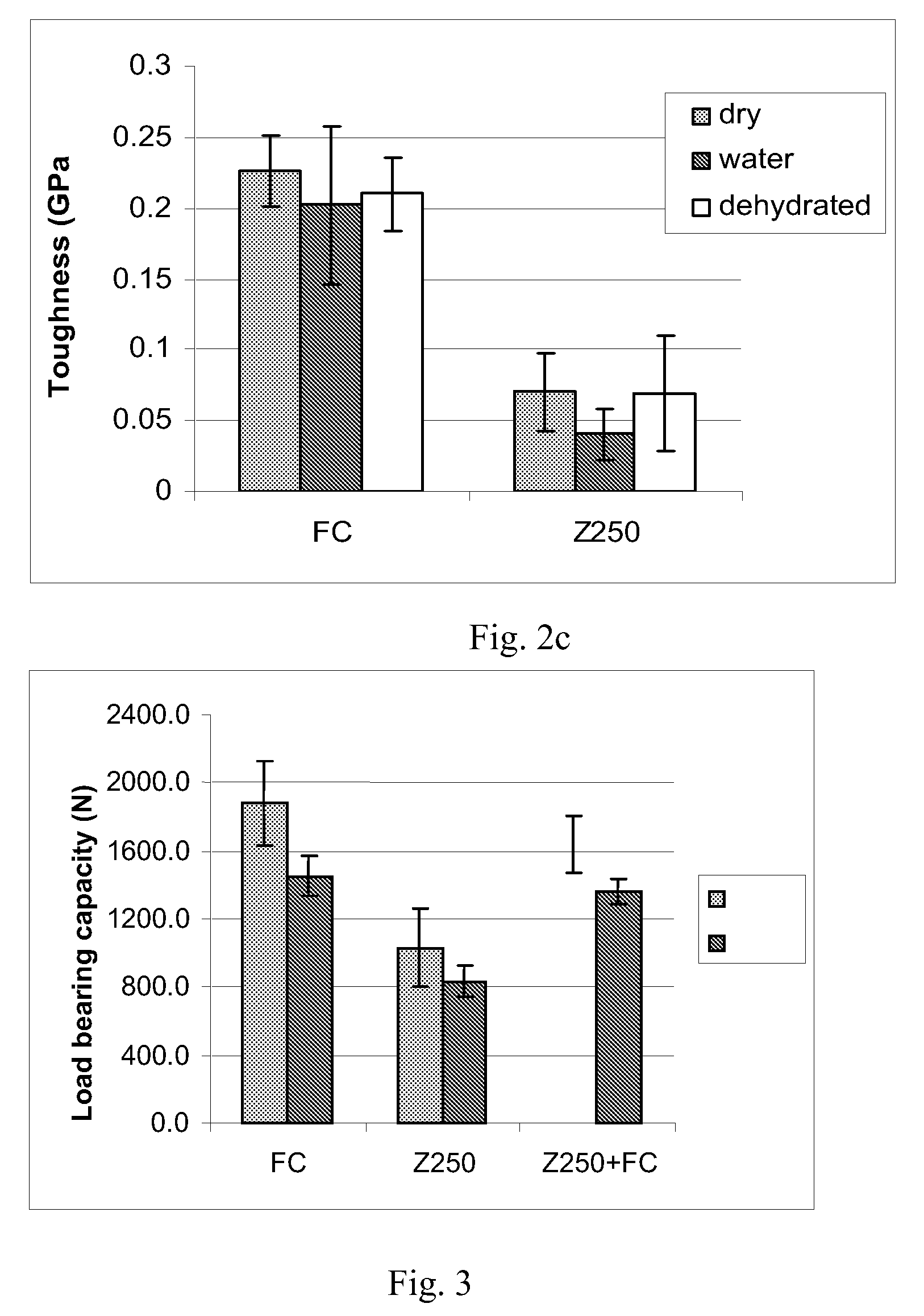Fiber-reinforced composites and method for the manufacture thereof
- Summary
- Abstract
- Description
- Claims
- Application Information
AI Technical Summary
Benefits of technology
Problems solved by technology
Method used
Image
Examples
example 1
Manufacture of Random Fiber-Reinforced Composite
[0076]a) Random fiber reinforced composite (FC) according to the invention was prepared by mixing 22.5 wt % of viscous resin (BisGMA-PMMA) embedded E-glass fibers (fiber prepreg, chopped to pieces (viscous bundles) having length of 10 mm) to 22.5 wt % of dimethacrylate-PMMA resin matrix and then 55 wt % of silanized filler particles of SiO2 (3±2 μm in size) were added gradually. Polymerization initiator camphorquinone and activator DMAEMA was added to the mixture. The mixing was carried out using a high-speed mixer for 5 minutes (SpeedMixer, DAC). SiO2 filler particles were silane-treated with MPS using conventional technique. In light initiated polymerization, the resin matrix of dimethacrylate-PMMA formed semi-IPN polymer matrix for the composite FC.
[0077]b) As a comparison (not belongin to the scope of the invention) the same weight % percentage of pure E-glass fiber were added to dimethacrylate-PMMA resin matrix as above and then 5...
example 2
Flexural Strength, Flexural Modulus, Flexural Toughness and Load Bearing Capacity
[0078]Random fiber reinforced composites (FC) manufactured in Example 1a) and 1b) were tested according to ISO 4049 standard for mechanical properties. 3-point bending test specimens (2×2×25 mm3) and compressive load bearing test specimens (9.5×5.5×3 mm3) were made from experimental fiber composite FC and conventional particulate filler dental composite as comparative sample (Z250, 3M-ESPE). Bar-shaped specimens were made in a half-split stainless steel mold between transparent Mylar sheets and cubic specimens in open silicon mold covered by Mylar. Cubic specimens were fabricated by incrementally placing the materials in a silicon mold. In order to simulate the clinical condition, one additional test group was made by placing a bottom layer of FC (2.0 mm) as substructure and then conventional composite (1.0 mm) was applied subsequently after light initiated polymerization of the FC. Polymerization of th...
example 3
Degree of Monomer Conversion
[0088]The degree of monomer conversion (DC %) of composite FC and comparative Z250 during and after photo-initiated polymerization was monitored by Fourier transformation infrared spectroscopy (FT-IR) with an attenuated total reflectance (ATR) sampling accessory. FTIR has proved to be a useful technique for the analysis of degree of monomer conversion in dental composites. The setup used was designed to simulate the conditions during the fabrication of direct restorations. The upper surface of the test material was exposed to the light source and the lower surface was in contact with the ATR crystal. Therefore, the experimental design here provides information about how the polymerization propagates on the bottom of the test material. The materials were placed in 1.8 mm-thick ring molds with a diameter of 6.5 mm on the ATR-sensor (ZnSe-crystal). The upper surface of the specimen was covered with a Mylar sheet and a glass slide of 1 mm thickness and slight...
PUM
| Property | Measurement | Unit |
|---|---|---|
| Length | aaaaa | aaaaa |
| Diameter | aaaaa | aaaaa |
| Diameter | aaaaa | aaaaa |
Abstract
Description
Claims
Application Information
 Login to View More
Login to View More - R&D
- Intellectual Property
- Life Sciences
- Materials
- Tech Scout
- Unparalleled Data Quality
- Higher Quality Content
- 60% Fewer Hallucinations
Browse by: Latest US Patents, China's latest patents, Technical Efficacy Thesaurus, Application Domain, Technology Topic, Popular Technical Reports.
© 2025 PatSnap. All rights reserved.Legal|Privacy policy|Modern Slavery Act Transparency Statement|Sitemap|About US| Contact US: help@patsnap.com



